5 Best Dynamic Microphones Under $50 in 2024
When it comes to recording and live performances, the right equipment can make all the difference. Dynamic microphones are beloved for their durability, versatility, and the ability to handle high sound pressure levels – and the good news is, you don’t need to break the bank to get one! Even if you’re on a tight budget, there are fantastic options available that provide professional-quality sound without the hefty price tag. Let’s dive into the world of affordable dynamic mics, as we present the best picks under $50 that hit the sweet spot between quality and cost-effectiveness. Here’s our listicle review to guide you through each contender.
When selecting the best dynamic microphone under $50, we prioritize several key criteria to ensure you get great value and performance without breaking the bank. Here’s what we look for:
- Sound Quality: Even at a modest price point, a good dynamic microphone should offer clear and crisp audio with a focus on vocal intelligibility. We evaluate the frequency response and pick out mics that can capture a natural sound.
- Durability: Considering dynamic microphones are often used in live settings, robust construction is essential. We look for microphones made with sturdy materials able to withstand rough handling and repeated use.
- Versatility: Whether you’re recording instruments or speaking, the best microphones can handle a range of applications. We select models that perform consistently across different scenarios.
- Ease of Use: A good dynamic microphone should be plug-and-play, requiring minimal setup and being compatible with a wide range of devices and sound systems.
- Accessories: We consider any additional accessories, like mounts or carrying pouches, which can add value to your purchase.
- Reputation and Reviews: User feedback and brand reputation play a role in our selection, as they can be indicative of long-term reliability and user satisfaction.
Armed with these selection criteria, we’ve picked out dynamic microphones that punch above their weight, ensuring you get the best audio performance for under $50.
Below is a simplified table comparing the five dynamic microphones under $50 based on price, polar pattern, frequency response, connectivity, and any additional notable features.
| Feature | Behringer XM8500 Ultravoice | Shure PGA48 | Audio-Technica ATR2100x-USB | Samson Q2U | Pyle PDMIC58 |
|---|---|---|---|---|---|
| Average Price* | ~$25 | ~$39 | ~$49 | ~$49 | ~$12 |
| Polar Pattern | Cardioid | Cardioid | Cardioid | Cardioid | Unidirectional |
| Frequency Response | 50 Hz to 15 kHz | 70 Hz to 15 kHz | 50 Hz to 15 kHz | 50 Hz to 15 kHz | 50 Hz to 15 kHz |
| Connectivity | XLR | XLR | XLR and USB | XLR and USB | XLR |
| Additional Notable Features | Built-in pop filter | Tailored for speech and vocals | Handheld/Stand mount, Built-in headphone jack | Handheld/Stand mount, Built-in headphone jack | N/A |
*Prices are approximate and subject to change.
Keep in mind that the best choice for you will depend on your specific needs and preferences, such as if you’re planning to use the mic for live performances, podcasting, or general use. The Audio-Technica ATR2100x-USB and Samson Q2U offer USB connectivity, which might be beneficial if you’re looking to plug the microphone directly into a computer without needing a separate audio interface.
Behringer XM8500 Ultravoice
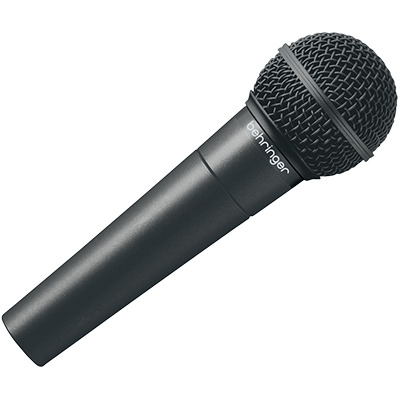
The Behringer XM8500 Ultravoice is a revelation for anyone in search of quality on a tight budget. As a dynamic microphone, it really punches above its weight class in terms of durability and audio performance. Straight out of the box, my first impression was the solid, hefty feel it has – giving the impression that it can take a few stage knocks without missing a beat.
Sound-wise, I was genuinely impressed with its ability to handle both vocals and instruments with a clear and warm reproduction. It’s not just the sound that’s impressive; the cardioid pickup pattern does an excellent job at noise rejection from the sides and rear, making it a sound choice for live gigs or for use in a home studio where you can’t entirely control your acoustical environment.
Specs:
- Type: Dynamic
- Polar Pattern: Cardioid
- Frequency Response: 50 Hz to 15 kHz
- Impedance: 150 ohms
- Connector: XLR
Pros:
- The robust build quality ensures durability and longevity.
- The sound quality is surprisingly clear and warm, especially at this price point.
- Excellent feedback suppression and noise rejection capabilities.
- No battery or phantom power required which simplifies setup.
Cons:
- Some may find the frequency response a bit limited for more nuanced recordings.
- It lacks additional features such as an on/off switch which some users might find handy.
- The included storage case feels a bit cheap and doesn’t offer much in terms of protection.
Price:
Typically retails for around $20-$30, which frankly is a steal for the level of performance it delivers. It absolutely excels in being a budget-friendly option without making you feel like you’ve compromised on quality.
In conclusion, the Behringer XM8500 Ultravoice is a dynamic microphone that I wholeheartedly recommend for anyone on a strict budget. It’s a workhorse that provides stellar performance where it truly matters — capturing great sound. Whether you’re podcasting, gigging, or just need a reliable mic for announcements, the XM8500 won’t disappoint.
Shure PGA48 Dynamic Vocal Microphone
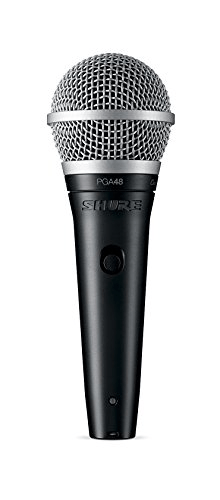
Overview:
The Shure PGA48 harbors the essence of clarity and robustness that the iconic Shure brand is known for, but at a price point that doesn’t leave your wallet feeling light. It’s an ideal choice for spoken word, karaoke, and even live vocal performances. My experience with the PGA48 revealed that it punches well above its weight class, delivering a surprising dose of warmth and presence in the vocal range. The unidirectional (cardioid) pickup pattern did a commendable job at minimizing background noise, making it particularly effective in noisy environments. The built-in on/off switch is a small but significant addition, providing convenient control during use.
Specs:
- Transducer Type: Dynamic
- Polar Pattern: Cardioid
- Frequency Response: 70Hz to 15kHz
- Output Impedance: 600 ohms
- Sensitivity: -53.5 dBV/Pa (2.10 mV)
- Weight: 300 grams
- Connector: XLR
Pros:
- The solid build quality is something to rave about; it feels like it can survive the accidental drops and the rigors of travel.
- It offers a clear vocal reproduction that tends to flatter speech and provides sufficient articulation for singers without the harshness often associated with budget microphones.
- Comes with useful accessories like an XLR cable, which is not always a given in this price range.
Cons:
- The frequency response isn’t as broad as some of the more expensive options, which means it may lack some finesse in capturing nuanced vocal performances.
- It doesn’t include some features more advanced users might want, like a low cut filter or a detachable cable.
Price:
The Shure PGA48 typically hovers around the $40 mark, making it one of the most accessible microphones from a reliable brand like Shure. Considering the quality you’re getting, it represents not just a bargain, but a smart investment for anyone stepping into audio work.
My takeaway? The Shure PGA48 stands out as a dynamic microphone that offers a balance of performance and affordability. While it may not boast the pro-level specs audio veterans might look for, it solidly covers all the bases for those who need a reliable microphone that doesn’t demand a deep dive into their savings.
Audio-Technica ATR2100x-USB Dynamic Microphone
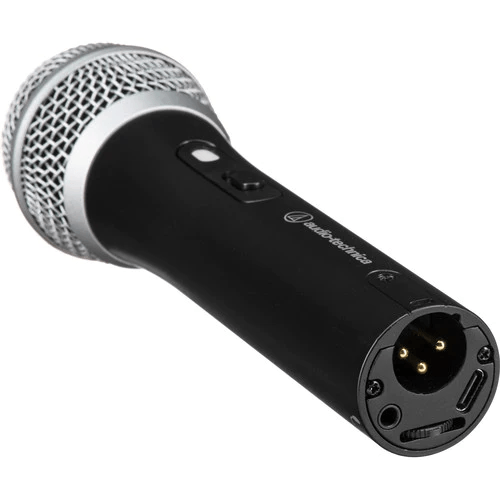
The Audio-Technica ATR2100x-USB is a standout performer in the sub-$50 dynamic microphone market, offering versatility and durable build quality that punches well above its weight class. What initially drew me to this mic is the impressive dual output offering – it provides both USB and XLR connections. This hybrid design means you can plug it directly into your computer for a quick podcast session or run it through an audio interface/mixer for more professional setups.
In terms of aesthetics, it doesn’t scream “cheap microphone,†with a design that’s both functional and subtly stylish. Durability is another aspect where the ATR2100x-USB shines. The body feels solid, which instills a sense of reliability often missing at this price point.
The audio quality is where the ATR2100x-USB truly excels. It offers a clear and natural sound, capturing voice with a warmth and presence that’s rare among its peers. I’ve found it to be forgiving with varied speaking distances and off-axis sound. Notably, it adeptly resists picking up a lot of background noise, making it ideal for use in environments that aren’t acoustically treated.
Specs:
- Microphone Type: Dynamic
- Polar Pattern: Cardioid
- Frequency Response: 50-15,000 Hz
- Output Connection: USB-C, XLR
- Accessories: Stand clamp, tripod desk stand, USB-C to USB-A cable, and XLR to XLR cable
Pros:
- Remarkable sound quality for the price, with a richness that benefits vocal recording.
- Dual USB and XLR outputs make this microphone unusually versatile for digital and analog audio work.
- The cardioid pickup pattern effectively minimizes background noise and isolates the speaker.
- Solid build quality gives the impression of a more expensive microphone.
- The inclusion of all necessary cables and a desk stand is a notable bonus.
Cons:
- While the audio performance is exceptional, bass-heavy voices might require additional EQ to avoid muddiness.
- The provided tripod stand is serviceable but feels a bit flimsy compared to the heft of the mic itself.
Price:
The Audio-Technica ATR2100x-USB generally hovers at or just below the $50 mark, which frankly feels like a steal for the feature set and performance quality it offers. This microphone brings professional touch to your audio projects without breaking the bank.
In conclusion, the Audio-Technica ATR2100x-USB is a microphone that defies its price tag. It’s ideal for podcasters, streamers, and musicians on a budget who need good sound quality and functionality. If you’re looking to upgrade your audio without a hefty investment or need a versatile mic to start your audio journey, this might just be your best bet in this price range.
Certainly! Let’s dive into an in-depth review for product number 4, the Samson Q2U.
Samson Q2U Dynamic Microphone
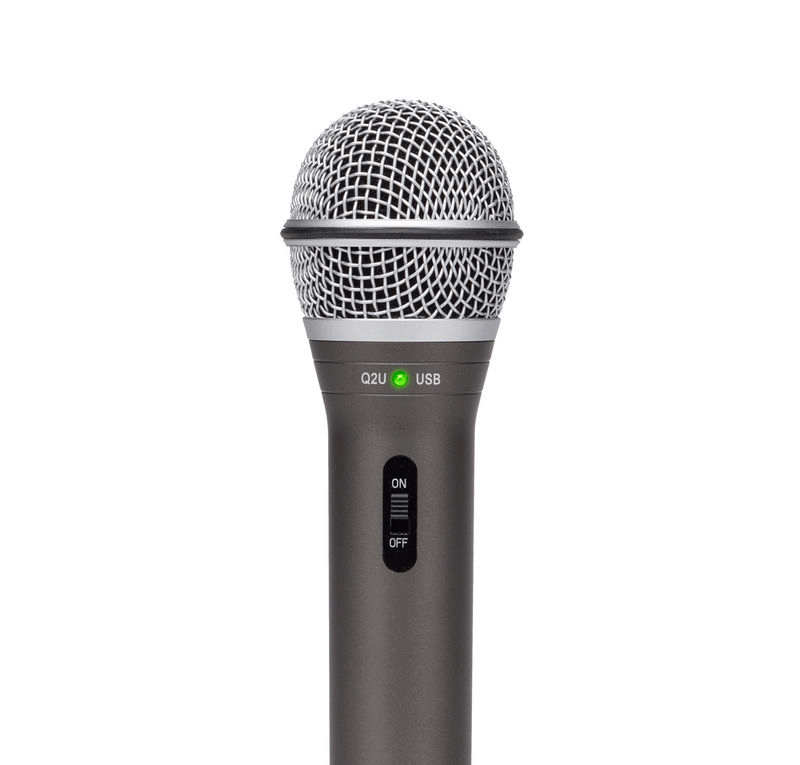
Overview:
The Samson Q2U combines the convenience of digital and analog audio capture into one dynamic microphone. It’s a standout choice for those seeking versatility without breaking the bank. Upon unboxing the Q2U, I immediately noticed its solid build quality. It feels robust in hand, promising durability that’s essential for frequent use.
In terms of performance, the Q2U impresses with its clear and detailed sound reproduction. I’ve found it excellent for podcasting, streaming, and recording instruments, showcasing a flat and natural frequency response. The mic does a good job minimizing background noise, which is a huge plus for recording in less controlled environments. It also comes with a handful of useful accessories including a mic clip, desktop tripod stand, windscreen, XLR cable, and USB cable, which means you can get to work right out of the box.
Another striking feature is its versatility. It’s not just an XLR microphone but also a USB microphone, which means you can connect it to a variety of devices, from audio interfaces and mixers to directly to your computer for digital recording. This flexibility is fantastic for those working across different mediums and who might not always have access to specialized audio equipment.
Specs:
- Microphone Type: Dynamic
- Polar Pattern: Cardioid
- Frequency Response: 50Hz-15kHz
- Output Connectors: USB Type B, XLR
- Digital Output: 16-bit, up to 48kHz sampling rate (USB)
- Accessories: Mic clip, tripod stand, windscreen, XLR cable, USB cable
Pros:
- Excellent build quality ensures long-term use.
- Dual output options (USB and XLR) provide versatility.
- Surprisingly good sound quality for its price range.
- Reduced handling noise and effective rejection of off-axis sounds.
- Comes with a complete set of accessories for immediate use.
Cons:
- The microphone’s included tripod stand may not be the most stable for all setups.
- Some may find the need for additional gain when using the XLR connection.
Price:
At under $50, the Samson Q2U is a remarkable bargain. It holds its own against microphones at higher price points, offering features and quality that are hard to find in this budget-friendly tier.
In my opinion, the Samson Q2U’s price-to-performance ratio is its biggest selling point. If you’re diving into the world of audio recording, podcasting, or streaming and need a workhorse microphone that won’t let you down, the Q2U is the way to go. The combination of sound quality, build, and the inclusion of both USB and XLR connectivity makes it a top contender in its price bracket and a wise investment for anyone starting out or looking to expand their setup on a budget.
Pyle PDMIC58
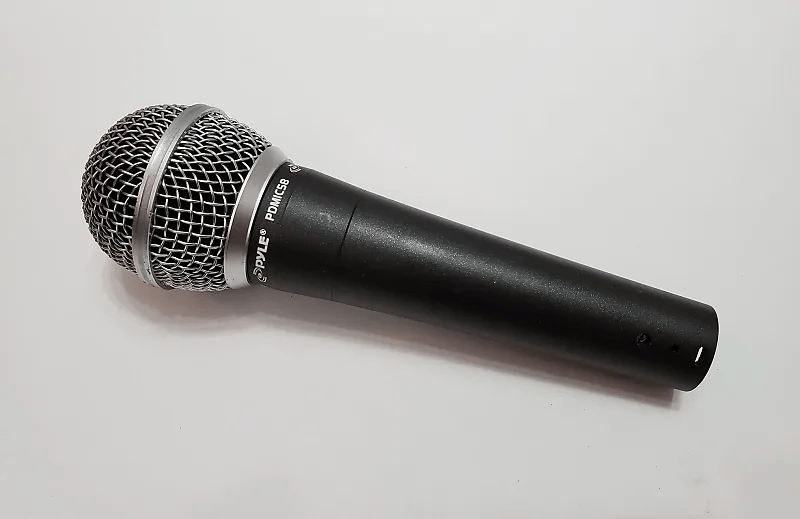
Brief Intro:
The Pyle PDMIC58 is a budget-friendly dynamic microphone that has garnered attention for its solid build and performance at a very affordable price point. Ideal for beginners, podcasters, and musicians who are on a tight budget, this mic offers the essentials for getting good audio on a shoestring.
Overview:
Upon testing the Pyle PDMIC58, the first thing that I noticed was its sturdy construction. The microphone feels robust in hand, giving off the impression of durability despite its low cost. It comes with a unidirectional cardioid pickup pattern, which is great for capturing speech or vocals as it reduces background noise and isolates the main sound source well.
Performance-wise, the PDMIC58 does a commendable job for a sub-$50 microphone. Its sound quality is surprisingly clear for vocal applications; it manages to capture a natural tone without the tinny or muffled sounds often found in this price range. It can handle high pressure sound levels reasonably well, making it a viable option for louder sources, though it doesn’t compare to high-end microphones used in professional settings.
Specs:
- Pickup Pattern: Unidirectional Cardioid
- Frequency Response: 50Hz – 15kHz
- Sensitivity: -54dB +/- 3dB (at 1kHz)
- Output Impedance: 600 Ohms +/- 30% (at 1kHz)
- Construction: Metal
Pros:
- Excellent build quality for the price.
- Good noise isolation with its cardioid pattern.
- Clear sound reproduction for the budget-conscious users.
Cons:
- It can feel a bit heavy, which might not be ideal for all users.
- Lacks the nuanced sound quality of more expensive mics.
- May require additional EQ or processing to get the best sound for professional applications.
Price:
- Approximately $20 (Price may vary based on retailer and offers).
In conclusion, the Pyle PDMIC58 is a solid entry-level dynamic microphone that punches above its weight in terms of build and sound quality. It definitely stands out in the sub-$50 category, providing clear audio reproduction without breaking the bank. A great option for those just starting out, needing a reliable backup, or working within a tight budget. However, for advanced uses or studio-quality recordings, one might consider investing a little more for a significant step up in audio clarity and detail.
Conclusion:
In the realm of dynamic microphones under $50, we’ve explored options that balance cost and quality to deliver solid performance for a variety of needs. Whether you’re podcasting, performing live, or just in need of a reliable audio solution, our selection highlights affordability without compromising on the essentials. Remember, while choosing a microphone within this budget range, the right one will depend on specific requirements and the context in which you’ll be using it.
FAQs:
- What should I consider when choosing a dynamic microphone under $50?
Consider the microphone’s build quality, sound reproduction, compatibility with your devices, and the specific purpose you’ll be using it for (e.g., vocals, instruments, podcasting). - Can I get professional-quality sound from a microphone under $50?
While sub-$50 microphones may not match professional studio quality, many offer respectable sound that can be more than sufficient for amateur recording, podcasting, and live performances. - How important is brand when choosing an affordable dynamic microphone?
Brand can be an indicator of quality and reliability; however, some lesser-known brands offer excellent value for money. Focus on user reviews and specifications over brand recognition alone.
Disposable oil elf bar wpuff vapor
Shenzhen Yingyuan Technology Co.,ltd , https://www.yingyuanvape.com
